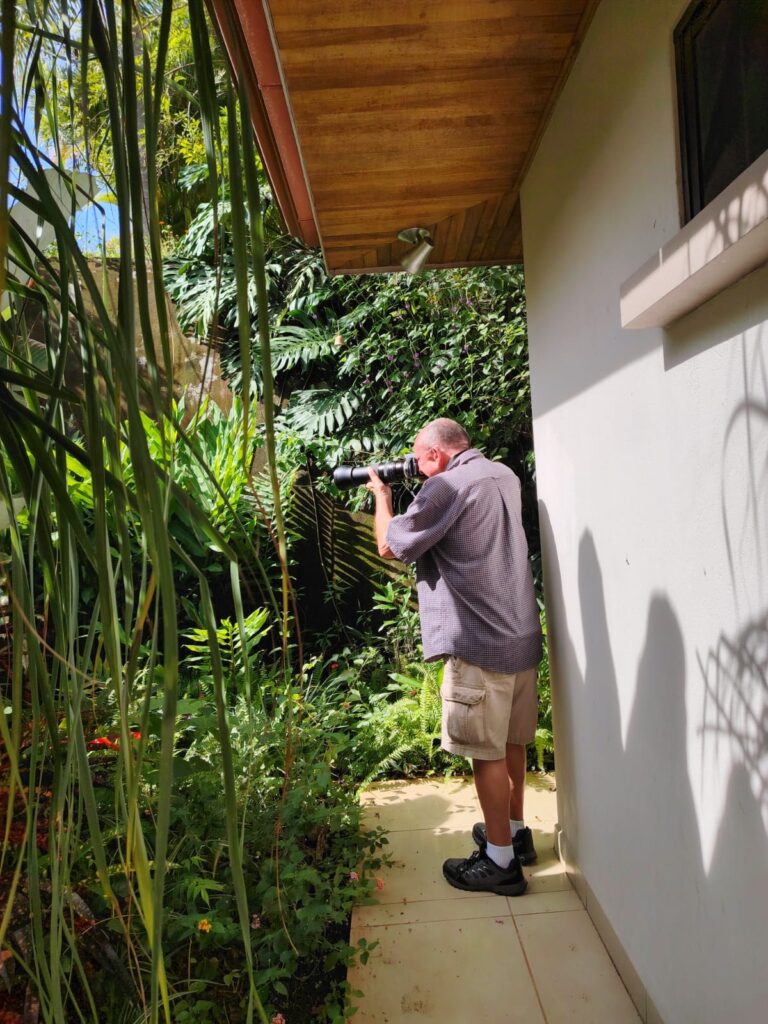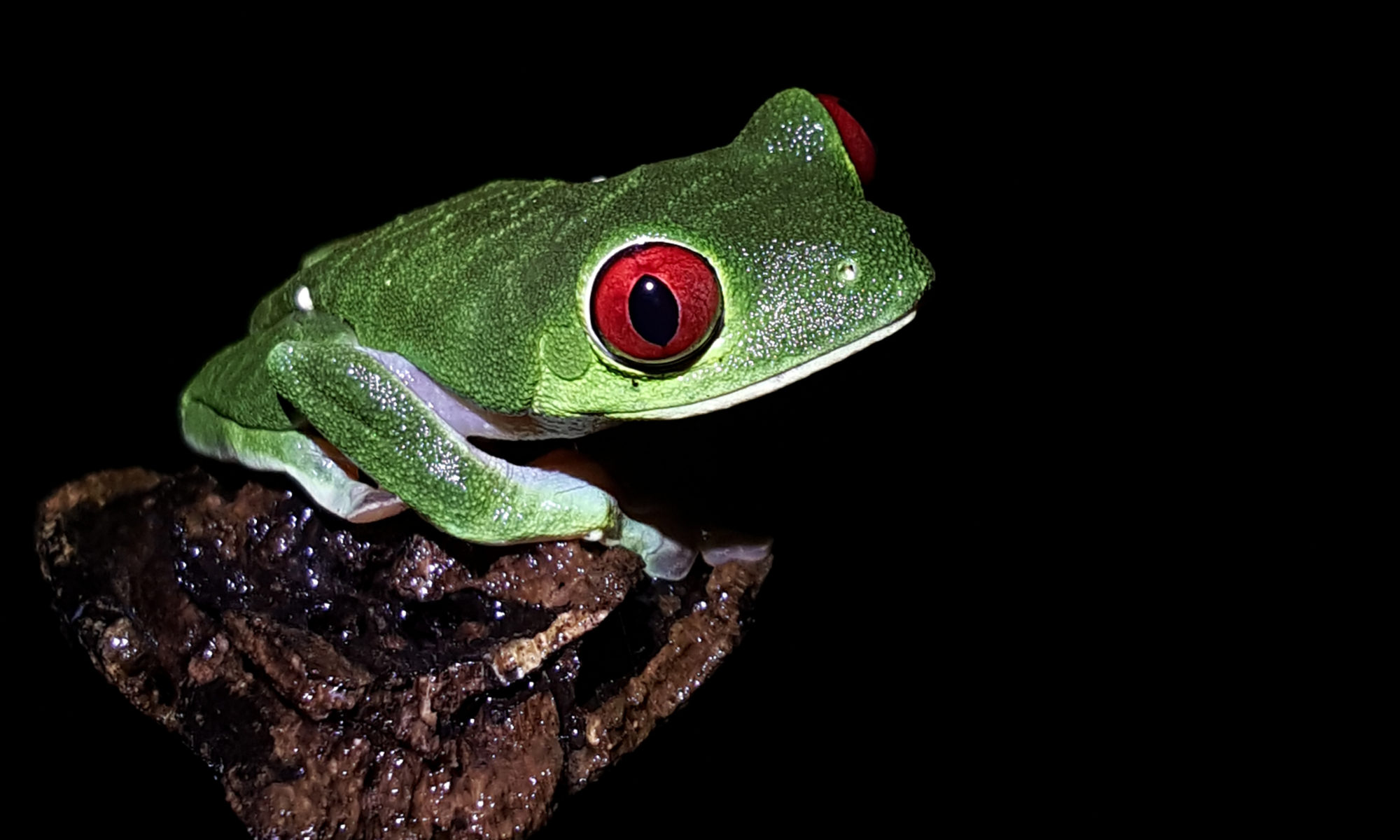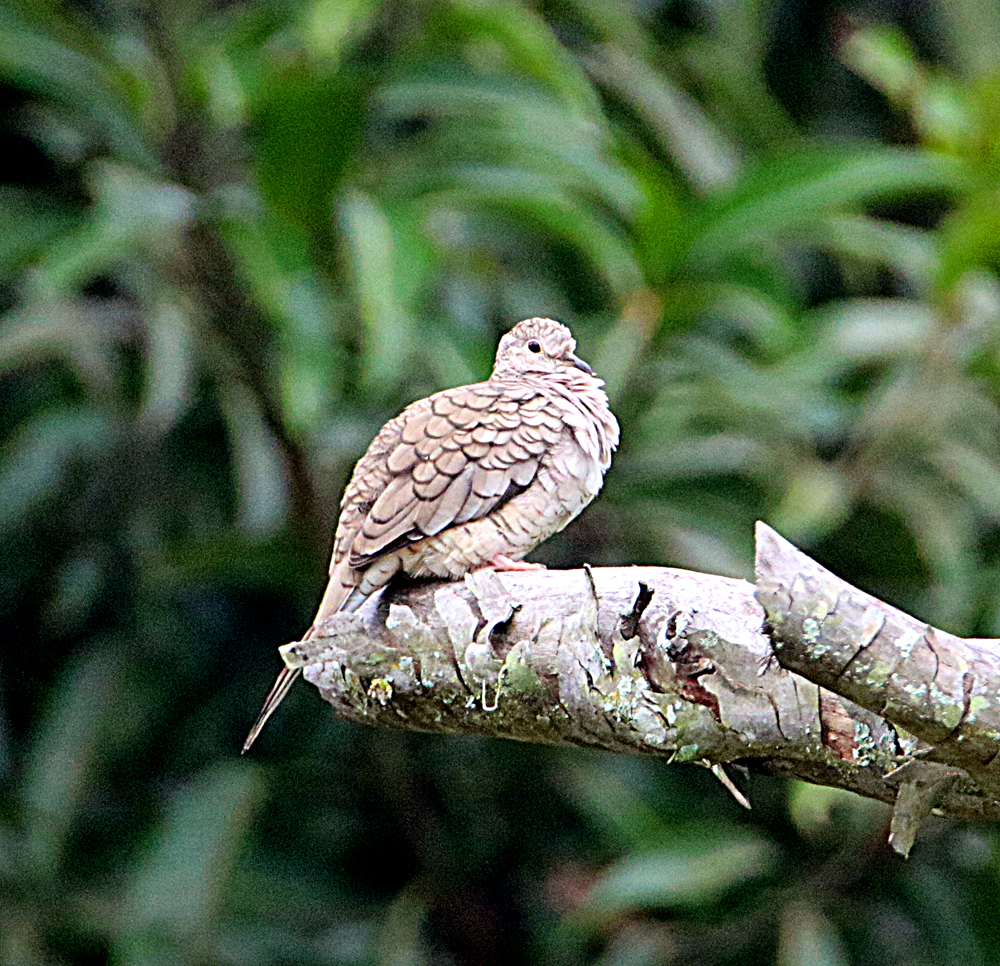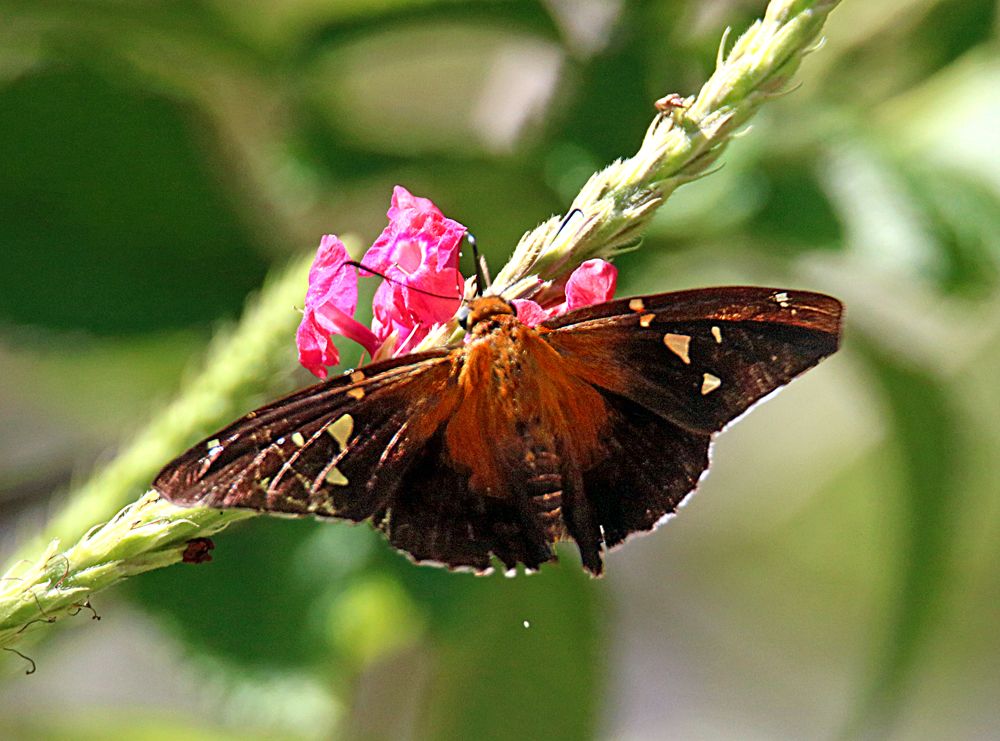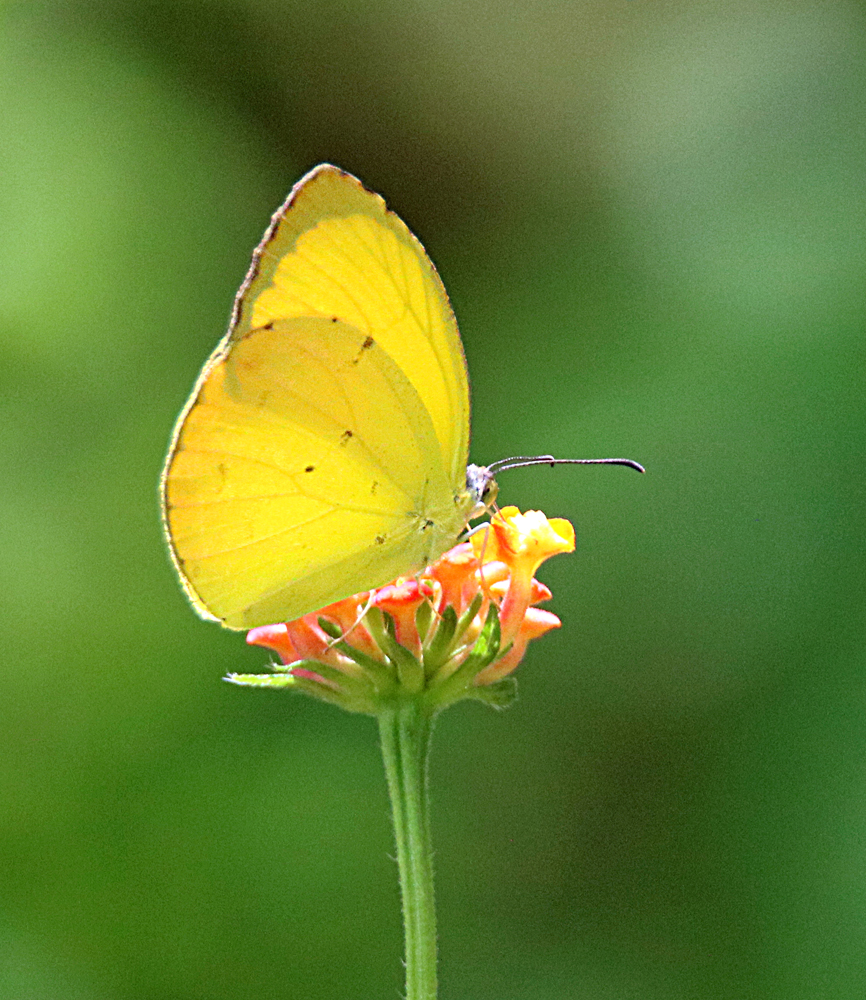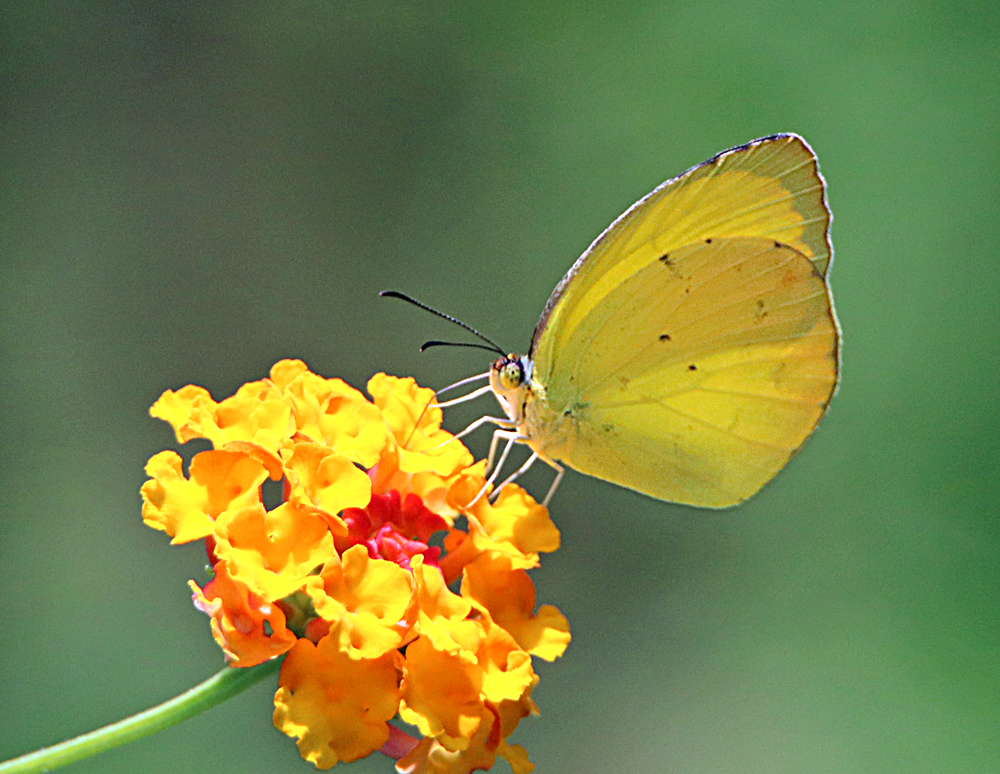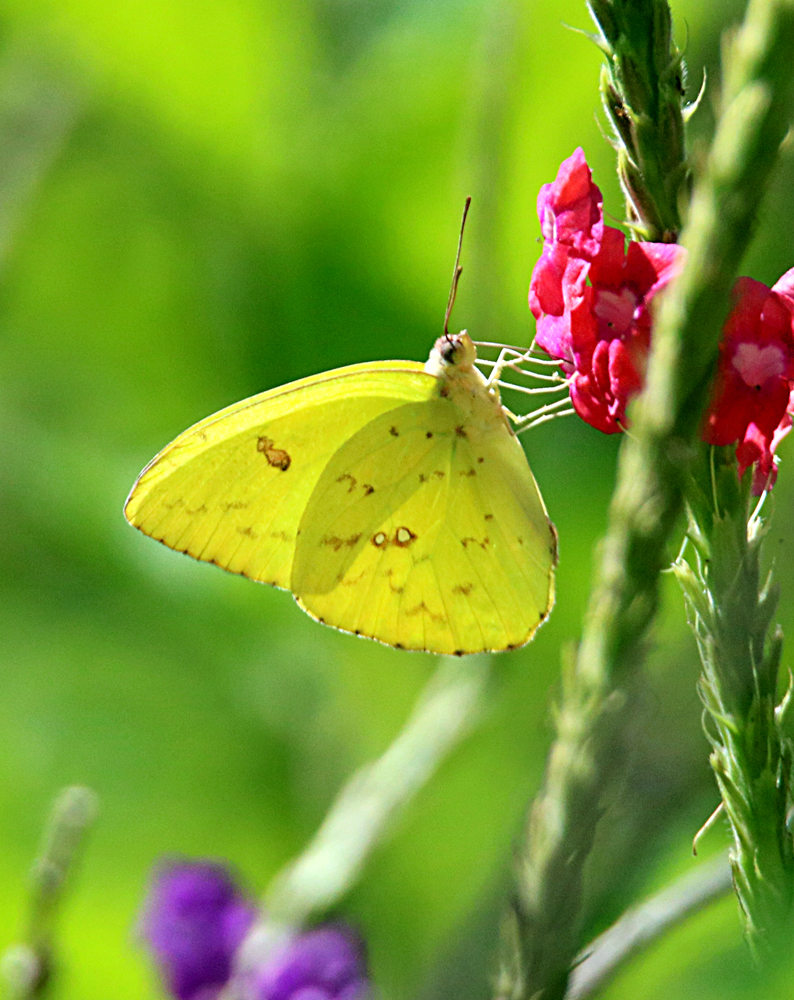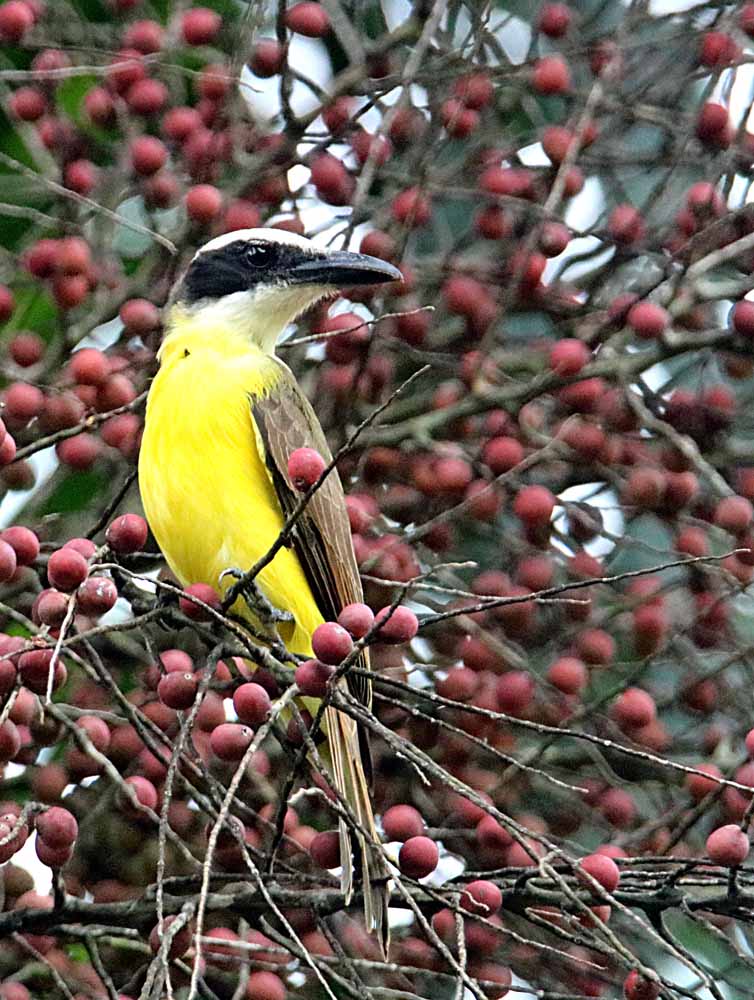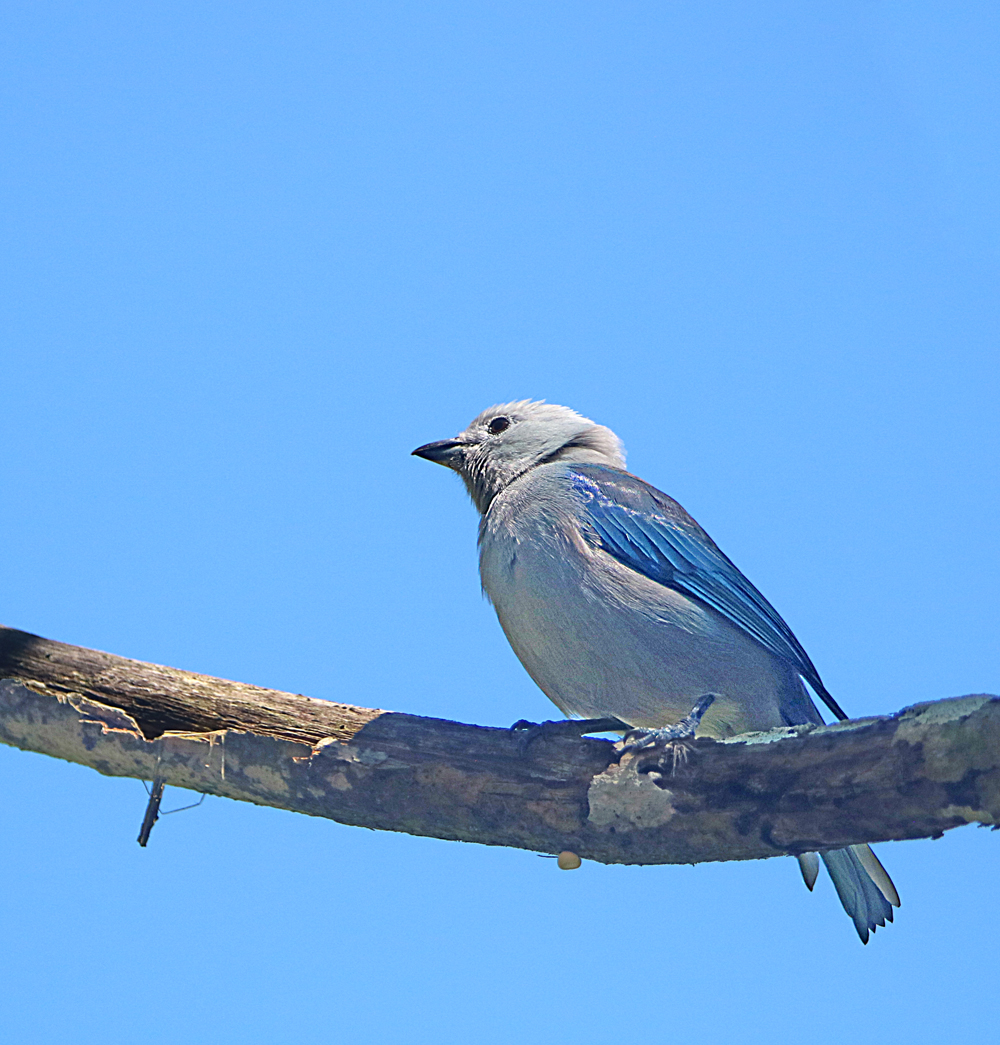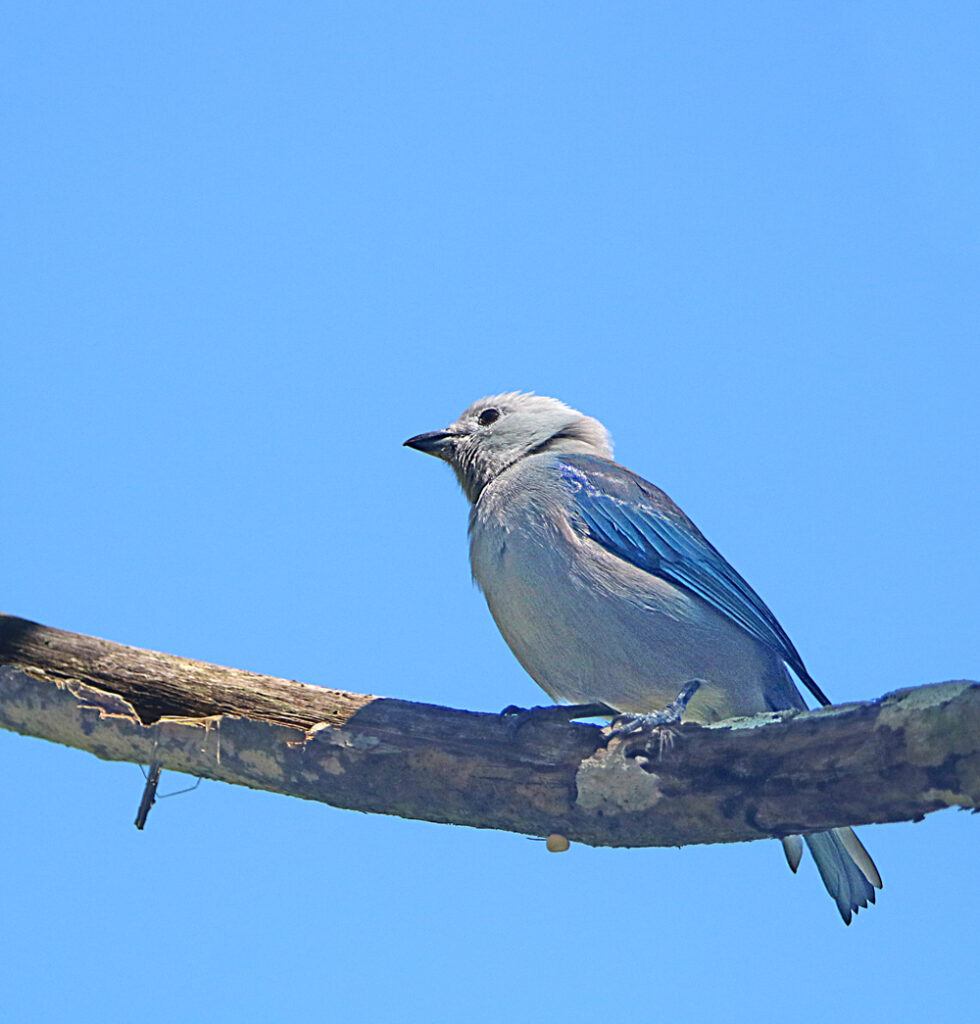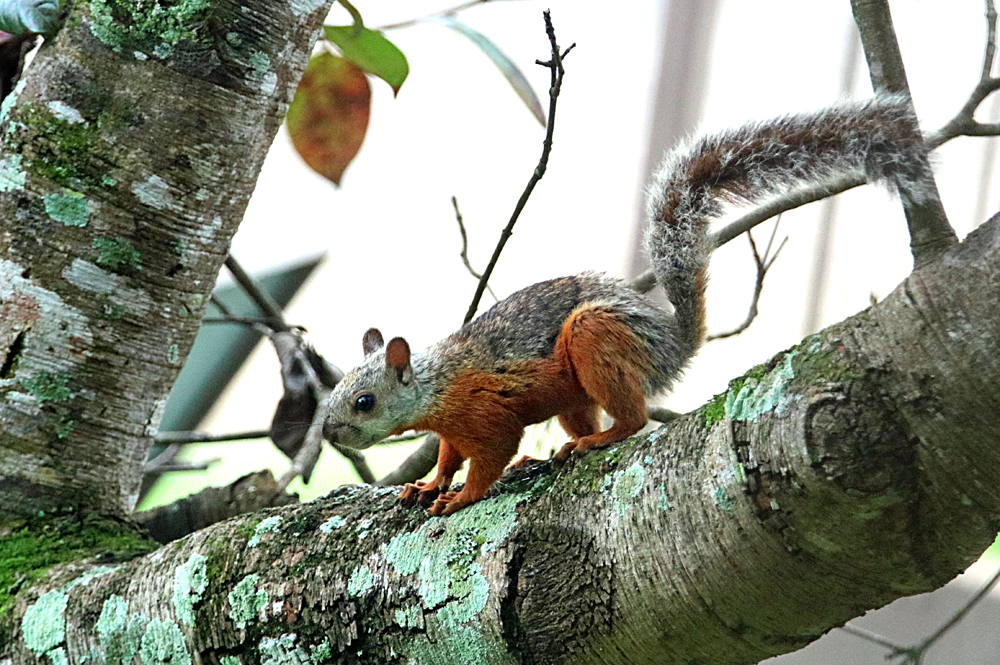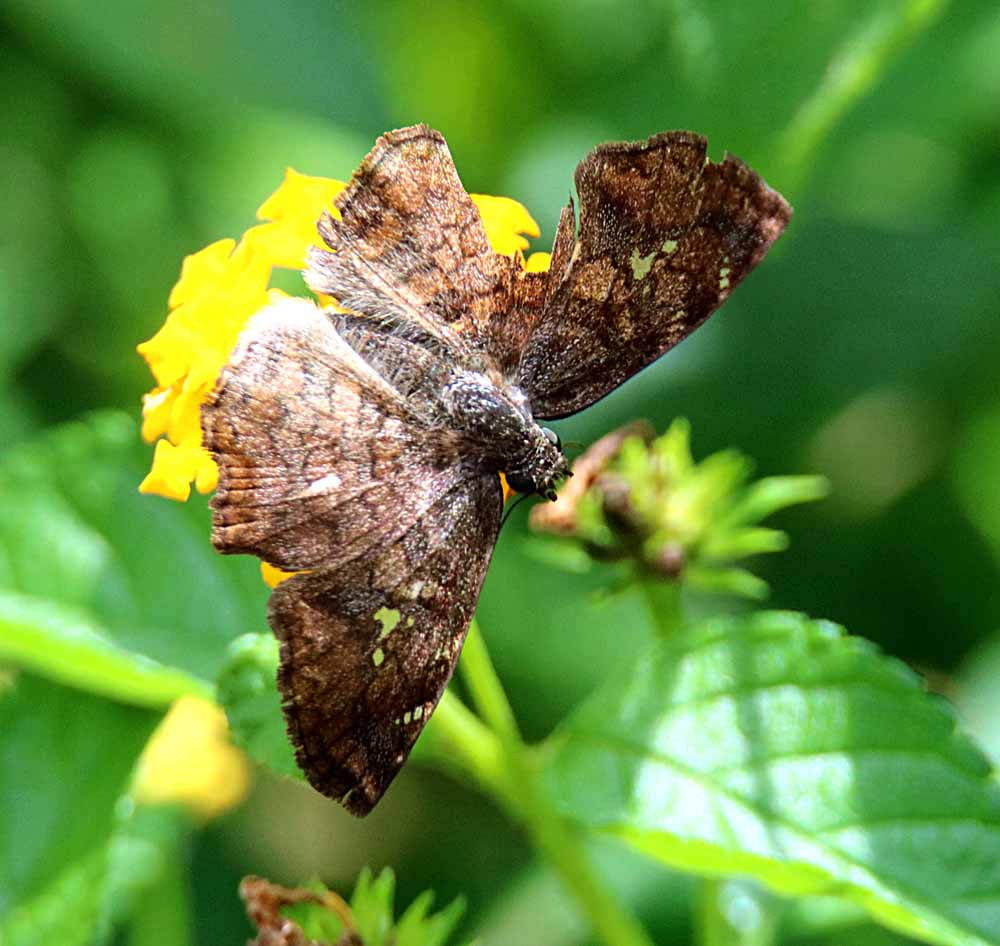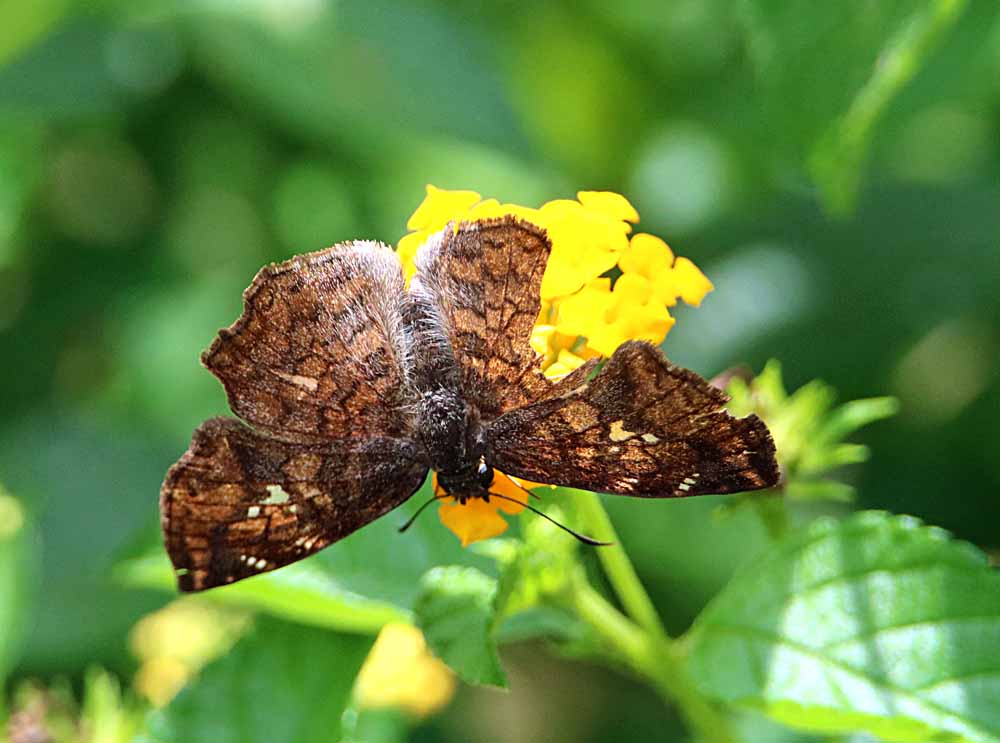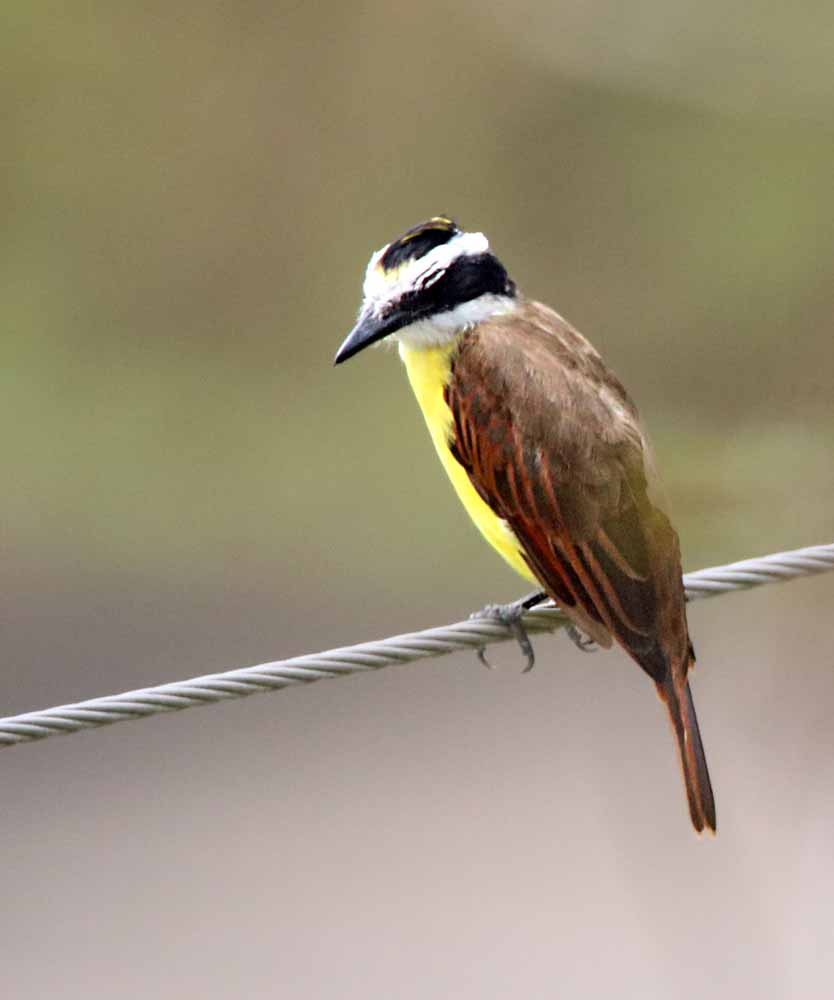This species, Calephelis laverna (my gallery link) was seen almost daily last year but only a few times this year and it is one I have had trouble identifying with none of the expert identifiers responding to my submissions on iNaturalist or BAMONA. With the Glassberg book I gave it the Rounded Metalmark, Calephelis perditalis, identification. Later with more photos to compare with on iNaturalist, I changed to Calephelis laverna (mainly because of the bits of white on the border). iNaturalist doesn’t use a “common name” while Butterflies of America calls it Laverna Calephelis (reversing the scientific name word order which they generally do when there is not a known “common name” and BAMONA always follows Butterflies of America.
But I am still hoping for an “expert” to confirm or change this identification. Until then, this is my best effort at identification. It is found from Mexico to Brazil, so the location fits. Just one photo from my garden on October 1 and thus the beginning of October nature photos . . .
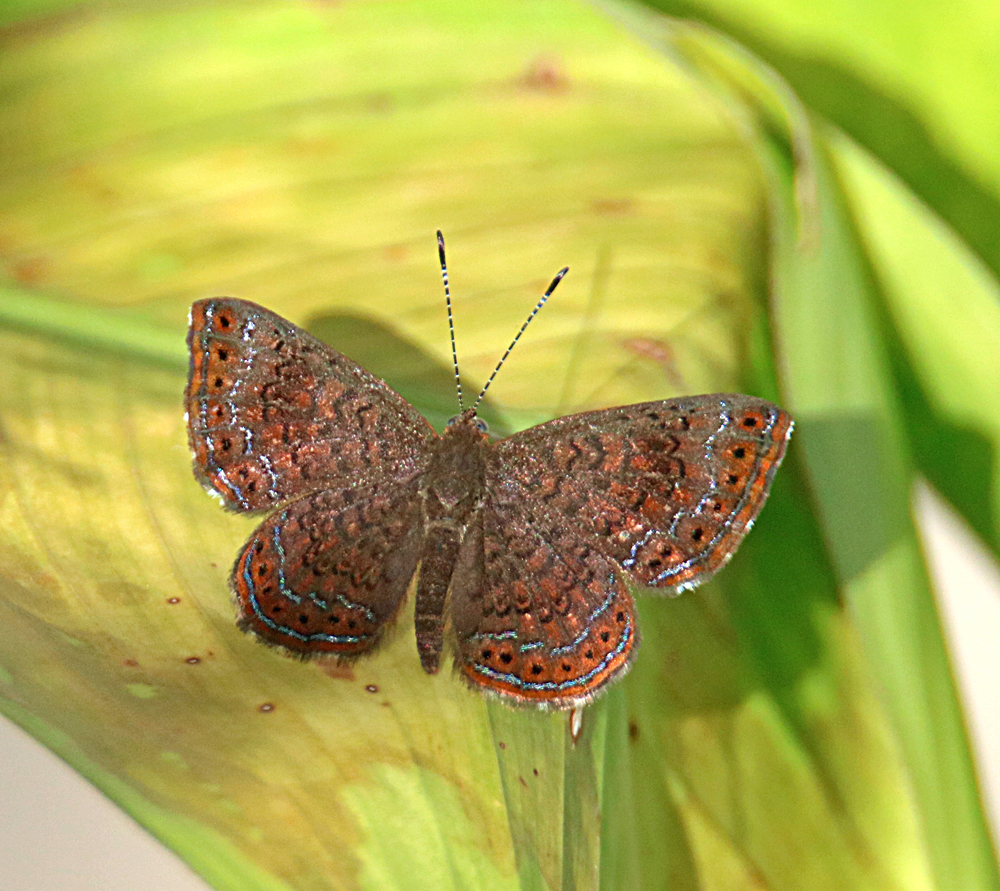
¡Pura Vida!
And Me Photographing in my Garden . . .
